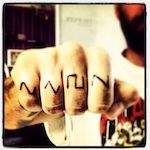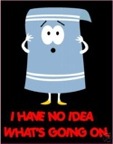| Author
|
Producing like writing sheet music?
|
Nectarios
Martian Arts

Started Topics :
187
Posts :
5292
Posted : Aug 12, 2010 22:30
|
so a note stops, then you have the synth's release setting, a massive reverb algorithm, a delay, any kind of crazy feedback going on on say, a flanger in series after the delay, feeding back into it self loads as well as the delay, into a rythmic gate plug in... which obviously make the note length irrelevant...anyhow, I'll stop my muntering now 
       
http://soundcloud.com/martianarts |

|
|
Ascension
IsraTrance Full Member

Started Topics :
170
Posts :
3642
Posted : Aug 12, 2010 22:42
|
Er um, it's just a placeholder so you could do whatever you want. For instance if you had some pitch rise drawn at the end of a phrase you could draw the midi note to be 4 bars + whatever length you wanted the tail to be. Nothing too complicated 
This would just be something someone would have to try out if they wanted. Gotta work on breaking the mold somehow...
        http://soundcloud.com/ascensionsound http://soundcloud.com/ascensionsound
www.chilluminati.org - Midwest based psytrance group |

|
|
loki
IsraTrance Junior Member

Started Topics :
49
Posts :
429
Posted : Aug 12, 2010 22:44
|
i've thought about this idea in the same concept as cosmosis's ideas about producing with shitty desktop speakers and then worrying about the mixing and sound quality later.
i think that writing a whole tune like this would be hard... but i have no problem using my 'run-of-the-mill-sawtooth-lead' patch as a placeholder for a lead when i can think of the melody i want but not the timbre. that way, at least i can get it down, see how it sounds, and not forget about it.... and then i can warp the hell out of it later. |

|
|
aciduss
IsraTrance Full Member

Started Topics :
112
Posts :
1490
Posted : Aug 12, 2010 23:57
|
|
I don't see the point of it at all. |

|
|
willsanquil
IsraTrance Full Member

Started Topics :
93
Posts :
2822
Posted : Aug 13, 2010 00:52
|
Having watched all of the Cosmosis videos, I'm fairly certain that he doesn't mean write the whole tune from start to finish on shite speakers...
He mentions the benefits of having an A/B comparison right there at your fingertips to give an overall impression of the track. He says that sometimes studio monitors are like using a microscope to view a landscape, whereas shitty desktop hifi speakers give a quick and dirty impression of the entire thing.
I am really, really inspired by his Tweaking the Tuneage series because he goes out of his way to state that there is no formula, no magic technical EQ setting to get to good music, you just have to work at it and listen. People are always asking him ridiculous questions like 'how do you make an evolving soundscape' or attempt to ask technical questions when they're really just asking the synthesis equivalent of what is the meaning of life.
Also I'm a fan of his left brain/right brain thoughts...there is so much technical discussion surrounding this type of music that at times I think it detracts from the musical portion. I know when I sit down and tweak kick and bass for an hour or two that I'm developing my ears/technical skills, but I am certainly not writing music or developing musical ideas.
I mean, fuck, if Zen Mechanics doesn't know shit about scales and mixed his album on medium-grade studio monitors in his apartment and can make amazing music....
        If you want to make an apple pie from scratch...you must first invent the universe If you want to make an apple pie from scratch...you must first invent the universe
www.soundcloud.com/tasp
www.soundcloud.com/kinematic-records |

|
|
Ascension
IsraTrance Full Member

Started Topics :
170
Posts :
3642
Posted : Aug 13, 2010 02:54
|
|
Maine Coon
IsraTrance Junior Member

Started Topics :
12
Posts :
1659
Posted : Aug 13, 2010 13:19
|
Until a few months ago I did not know there was any way of writing music other than what you described. 
I still cannot wrap my brain well around the “usual” way and still hope the next version of Ableton will have a note staff.
I think the old-fashioned ("your") method is perfect for percussion, good for bass, pads and simple leads. I am not sure how useful it is for complex evolving leads with effects on or for various flying tzwick-tzwack-pao-ching.
So, when I hear a lead playing those bouncy arpeggios in a full on track – wasn’t that written the way you describe? Didn’t the author just write a chord progression, put it through arpeggiator and then assign a lead sound to it?
|

|
|
Ascension
IsraTrance Full Member

Started Topics :
170
Posts :
3642
Posted : Aug 13, 2010 15:24
|
|
Maine Coon
IsraTrance Junior Member

Started Topics :
12
Posts :
1659
Posted : Aug 13, 2010 17:19
|
^
That's what I understood too. That's why I said it's perfect for percussion, bass and steady leads but not for something evolving or using a lot of effects. Like you can write the whole percussion part without making a single sound and then later try it with different samples to see what works best for each instrument. Or you can write the whole bass line without making a sound and then work on the sound character later. Or those catchy full on lead arpeggios - you still didn't answer my question about them, by the way. 
What I see in tutorials is this: let’s try out different HH samples. Oh, that one sounds good. Now, let’s see what rhythm I want to make with it. To me it seems backwards. The “right” way for me would be this: let’s think of the part a HH plays. OK, looks good. Now let’s find a good sample for it.
Have you ever heard of a composer, who first interviews and hires musicians, then assembles them in an orchestra and then stands in front of them and tries to think up what notes each instrument will play? It goes the other way around, doesn’t it?
Making no sound at all would be difficult. But making some sound with simplest patches would work. Using the same kick and percussion samples every time, playing bass and leads with a raw saw or even a sine wave – just to help you imagine where things are going. Kinda like composers play things out on their piano to help them imagine how it will sound when a proper orchestra plays it.
|

|
|
Ascension
IsraTrance Full Member

Started Topics :
170
Posts :
3642
Posted : Aug 13, 2010 17:24
|
I thought I did answer it. Everyone does it differently. What you described isn't how I do it anyway...
The difference is that this way you lay out the entire track, then add sounds, rather than making the sounds as you go.
        http://soundcloud.com/ascensionsound http://soundcloud.com/ascensionsound
www.chilluminati.org - Midwest based psytrance group |

|
|
mist
IsraTrance Full Member

Started Topics :
68
Posts :
642
Posted : Aug 13, 2010 18:42
|
this is actually how i've been writing the newest track i've been working on the past two weeks. i've been writing all the midi/note sequences waaaaaay before applying actual sounds to them... it's been turning out like a weird darkish foresty melodic angry psychedelic neo-goa thing... as i try different sounds with the different movements, write, and allow it all to evolve into whatever it might become...
        Are you connected to yourself? Are you connected to yourself?
http://soundcloud.com/justincaseboy |

|
|
Maine Coon
IsraTrance Junior Member

Started Topics :
12
Posts :
1659
Posted : Aug 13, 2010 20:40
|
Quote:
|
On 2010-08-13 17:24, Ascension wrote:
The difference is that this way you lay out the entire track, then add sounds, rather than making the sounds as you go.
|
|
Our signals must’ve gotten crossed somehow: I was actually agreeing with you in my previous over-convoluted post. 
When I doodle in Ableton (cannot honestly say “produce” yet), this is exactly what I do. Everything is MIDI. I “hear” a chord progression for 4-6 bars. I make a dummy track named “pads” and enter every chord there in long notes. Than from there I imagine a melody and enter it into a “lead” track. At this point I have to check both melody and chords, since I don’t trust my transcription skills yet. I do it with sines or saws. If nothing clashes and the melody sounds the way I imagined, I leave it alone. If not, I correct it. Then I do the same with the kick and percussions using a single track with a drum rack in it (“909” for example). Then I “calculate” what bass notes should be, based on chords and melody, and enter them in. Then I listen to everything (minus "pads" chords). If I had enough patience, I'd do this for the whole track - hasn't done it yet. If it’s OK, only then I start playing with patches and samples.
So, it's pretty much the way you describe it – right?
P.S. Yes, I know that going from leads to kick and bass is “backwards” too. Can’t help myself.
|

|
|
mubali
Mubali

Started Topics :
71
Posts :
2219
Posted : Aug 14, 2010 11:19
|
I tend to do that for writing a lot of my interconnecting leads. I'll write the midi for the call/response and the main lead functioning in between the C/R and just add the sound afterwards...
        An Eagle may soar, but Weasels don't get sucked into jet engines. An Eagle may soar, but Weasels don't get sucked into jet engines. |

|
|
Maine Coon
IsraTrance Junior Member

Started Topics :
12
Posts :
1659
Posted : Aug 14, 2010 13:53
|
^
As somebody with a traditional music background, did you find this way more natural than the "usual" EM production way? When you just started in EM, I mean. |

|
|
mubali
Mubali

Started Topics :
71
Posts :
2219
Posted : Aug 15, 2010 12:23
|
sometimes yes. It honestly would depend on the situation but more often than not most of my sound design starts at the initial patch so it's pretty easy for me to make a sound that fits once I've given it it's rules of engagement. However, a lot of time I just make one long note of 4-8 bars and start moving stuff around and setting modulation.
        An Eagle may soar, but Weasels don't get sucked into jet engines. An Eagle may soar, but Weasels don't get sucked into jet engines. |

|
|